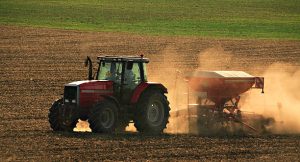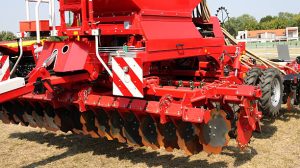In the heart of modern agriculture lies the Brillion Seeder, a beacon of precision and efficiency. As farmers embrace technology to revolutionize their practices, the Brillion Seeder stands out as a key player, offering not just a tool but a transformative approach to seeding. In this comprehensive guide, we’ll explore the Brillion Seeder from every angle – its features, buying and selling tips, an in-depth look at its parts, and a step-by-step guide on how to set it up for optimal results.
Buying and Selling Tips for the Brillion Seeder
Investing in a Brillion Seeder is a decision that can significantly impact your farming operation. Whether you’re buying or selling, consider these key tips:
For Buyers:
- Research Your Needs: Assess your specific farming requirements and the scale of your operation. Determine if the Brillion Seeder aligns with your crop diversity and field conditions.
- Check for Upgrades: Inquire about any recent upgrades or modifications to the Brillion Seeder model you are considering. Upgraded versions may come with enhanced features and efficiency improvements.
- Inspect Wear and Tear: Thoroughly inspect the seeder for signs of wear and tear. Pay attention to critical components like the seed metering system, ground contact rollers, and depth adjustment mechanism.
- Request Maintenance Records: If possible, ask for maintenance records and usage history. A well-maintained Brillion Seeder is more likely to deliver consistent and reliable performance.
For Sellers:
- Highlight Performance Metrics: Provide potential buyers with data on the seeder’s performance metrics. This could include seed placement accuracy, time-saving features, and any positive impacts on crop yield.
- Offer a Demonstration: If feasible, offer a demonstration to showcase the Brillion Seeder in action. This hands-on experience can instill confidence in the potential buyer regarding its functionality.
- Include Upgrades and Accessories: If you’ve made any upgrades or have additional accessories, make sure to highlight them. This could add value to the sale and make your Brillion Seeder more appealing.
- Transparent Communication: Be transparent about the seeder’s condition and any past issues. Honest communication builds trust with potential buyers, leading to a smoother transaction.
Exploring the Anatomy of the Brillion Seeder
Before delving into how to set up and use the Brillion Seeder, let’s understand its key components:
- Seed Hopper: Holds the seeds ready for dispensing during the seeding process.
- Seed Metering System: Regulates the flow of seeds, ensuring uniform distribution across the field.
- Ground Contact Rollers: Ensure proper seed-to-soil contact, promoting optimal germination.
- Depth Adjustment Mechanism: Allows users to customize the seeding depth based on crop and soil conditions.
- Tractor Attachment Point: Securely connects the Brillion Seeder to the tractor for seamless operation.
Now that we’ve familiarized ourselves with its components, let’s move on to the crucial steps of setting up and using the Brillion Seeder.
Setting Up and Using the Brillion Seeder: A Step-by-Step Guide
Setting Up:
- Prepare the Field: Ensure the field is well-tilled and free of debris. A clean, prepared field sets the stage for optimal seeding.
- Adjust Depth and Spacing: Customize the seeding depth and spacing based on the specific requirements of your crops. This can be done using the depth adjustment mechanism on the Brillion Seeder.
- Connect to Tractor: Securely attach the Brillion Seeder to your tractor. Confirm that the connection is stable and that the seeder is properly aligned for efficient operation.
Using the Brillion Seeder:
- Engage the Seeder: With the Brillion Seeder connected to the tractor, engage the Seeder mechanism. This activates the seed metering system and ground contact rollers.
- Drive Across the Field: Begin driving the tractor across the field in a systematic pattern. The Brillion Seeder will efficiently disperse seeds as per the adjusted settings.
- Monitor and Adjust: Keep a close eye on the seed distribution and make any necessary adjustments on the go. Monitoring ensures uniform coverage and optimal performance
- Inspection: After completing the seeding process, inspect the Brillion Seeder for any issues or irregularities. Clean and store it properly for future use.
Storage capacity
When considering the functionality of the Brillion Seeder, an often overlooked but critical aspect is its storage capacity. The seed hopper, acting as the storage reservoir for the seeds, plays a pivotal role in determining the efficiency and convenience of the seeding process.
Brillion Seeder’s Seed Hopper
The seed hopper is the primary storage component of the Brillion Seeder. Its design and capacity directly influence the following factors:
- Seed Quantity: The storage capacity of the seed hopper dictates the amount of seed that can be loaded onto the seeder at a given time. This is a crucial consideration, especially for larger farming operations where efficiency is key.
- Continuous Operation: A larger seed hopper allows for more extended periods of continuous operation without the need for frequent refills. This proves invaluable, particularly when seeding expansive fields.
- Reduced Downtime: With an ample storage capacity, farmers can minimize downtime associated with reloading seeds. This is particularly beneficial during critical planting windows or when operating in challenging weather conditions.
Determining Adequate Storage Capacity:
The optimal storage capacity depends on various factors, including the size of the farming operation, the type of crops being planted, and the desired seeding intervals. Farmers should consider the following when evaluating storage capacity:
- Field Size: Larger fields generally benefit from seed hoppers with higher storage capacities to reduce the need for frequent refilling.
- Crop Variety: Different crops may have distinct seeding requirements. Understanding the volume of seeds needed per acre for specific crops helps in determining suitable storage capacity.
- Seeding Intervals: If a farmer prefers less frequent stops for refilling during the seeding process, a larger seed hopper becomes advantageous.
Advantages of Adequate Storage Capacity:
- Operational Efficiency: A larger seed hopper minimizes the frequency of stops for refilling, contributing to more efficient and streamlined operations.
- Time Savings: With fewer interruptions for reloading, farmers can cover more ground in less time, optimizing the planting window.
- Consistent Seed Distribution: Adequate storage capacity ensures a steady and consistent seed flow, promoting uniform seed distribution across the field.
Choosing the Right Brillion Seeder Model:
When considering the purchase of a Brillion Seeder, be sure to assess the seed hopper capacity based on your specific needs and operational requirements. Discussing your unique circumstances with a knowledgeable dealer can aid in selecting the most suitable model that aligns with your farming goals.
Delving into Depths: Understanding the Seeding Depth of the Brillion Seeder
When it comes to precision farming with the Brillion Seeder, the seeding depth is a critical factor that can significantly impact crop development and overall yield. The ability to adjust and control the seeding depth ensures that farmers can tailor the Brillion Seeder to the unique requirements of different crops and soil conditions.
Key Aspects of Seeding Depth with the Brillion Seeder:
- Depth Adjustment Mechanism: that makes things much clearer! Depth adjustment mechanisms in seed drills are crucial components ensuring proper seed placement and optimal germination. Understanding their types and functions can significantly improve planting efficiency and crop yields.
-
Crop-Specific Considerations:
Different crops have distinct requirements when it comes to seeding depth. Understanding the optimal planting depth for specific crops is crucial for achieving optimal germination and early growth. The Brillion Seeder’s adjustable depth feature accommodates this variability.
3. Soil Type and Moisture Levels:
Seeding depth is also influenced by the type and moisture content of the soil. The ability to adjust the depth ensures that farmers can adapt to changing soil conditions, whether dealing with heavy clay or loamy soils.
Advantages of Adjustable Seeding Depth:
-
Optimal Germination:
By setting the seeding depth according to crop specifications, farmers can promote optimal germination. Proper seed placement in the soil enhances the chances of seeds receiving adequate moisture and nutrients for early growth.
-
Adaptability Across Crops:
The Brillion Seeder’s depth adjustment mechanism allows for versatility across different crops. Whether planting shallow-rooted vegetables or deep-rooted grains, farmers can fine-tune the seeder to meet the specific needs of each crop.
-
Minimizing Seed Waste:
Precise depth control minimizes the risk of seed waste. Seeds planted at the correct depth are more likely to establish healthy plants, reducing the need for reseeding and ensuring efficient use of resources.
Setting the Seeding Depth with the Brillion Seeder:
-
Evaluate Soil Conditions:
Before setting the seeding depth, assess the current soil conditions. Consider factors such as soil moisture, texture, and any compacted layers that may affect seed penetration.
2. Refer to Crop Guidelines:
Consult crop guidelines or recommendations for the specific crops you are planting. These guidelines often provide information on the ideal seeding depth for optimal results.
-
Adjust Depth Mechanism:
Utilize the Brillion Seeder’s depth adjustment mechanism to set the desired planting depth. This is typically a straightforward process, with clear markings and controls for precision.
-
Monitor and Fine-Tune:
While seeding, monitor the performance of the Brillion Seeder. If necessary, make on-the-go adjustments to the seeding depth based on real-time observations.
Navigating Soil Variability with the Brillion Seeder: A Comprehensive Guide
In the realm of precision farming, the adaptability of the Brillion Seeder to different soil conditions stands as a testament to its versatility. Farmers grappling with varying soil types and moisture levels can rely on the Brillion Seeder’s design and features to achieve consistent and reliable seeding across their fields.
Understanding Soil Variability:
-
Heavy Clay Soils:
Heavy clay soils can be dense and compacted, posing challenges for seed penetration and germination.
Brillion Seeder Advantage: The ground contact rollers of the Brillion Seeder play a crucial role here, breaking up soil clods and ensuring proper seed-to-soil contact. The adjustable seeding depth mechanism allows for optimal placement even in heavy clay.
-
Loamy Soils:
Challenge: Loamy soils, while generally fertile, may have variations in moisture content.
Brillion Seeder Advantage: The ability to adjust seeding depth on the go allows farmers to adapt to moisture variations in loamy soils. This adaptability ensures uniform seeding even in areas with varying water retention capabilities.
-
Sandy Soils:
Sandy soils often drain quickly, presenting a risk of seeds being planted too shallow.
Brillion Seeder Advantage: The adjustable depth control of the Brillion Seeder addresses this challenge by enabling farmers to set an appropriate planting depth for seeds in sandy soils, promoting better seed establishment.
Seeding in Wet or Dry Conditions:
1. Wet Conditions:
Planting in excessively wet conditions can lead to soil compaction and poor seed-to-soil contact.
Brillion Seeder Advantage: The Brillion Seeder’s ground contact rollers mitigate soil compaction, and its design allows for efficient seed placement even in wet conditions. However, it’s crucial to avoid field operations that might exacerbate compaction.
-
Dry Conditions:
Challenge: Planting in dry conditions may result in inadequate seed germination due to insufficient moisture.
Brillion Seeder Advantage: The Brillion Seeder’s precision seeding capabilities, combined with the ability to adjust seeding depth, helps optimize the use of available moisture. This ensures that seeds are placed at the right depth to access moisture for germination.
Tips for Seeding in Different Soil Conditions:
-
Soil Testing:
Before planting, conduct soil tests to understand the composition, pH, and nutrient levels of the soil. This information guides adjustments to the Brillion Seeder settings for optimal results.
-
Real-Time Adjustments:
Monitor the Seeder’s performance as you go. If you encounter areas with different soil conditions, make real-time adjustments to the seeding depth and settings to accommodate the changes.
-
Consistent Maintenance:
Regularly maintain the Brillion Seeder to ensure that all components, including ground contact rollers and depth adjustment mechanisms, are in optimal condition. Well-maintained equipment performs better in variable conditions.
Diversifying Crops: A Guide to Seed Compatibility with the Brillion Seeder
The Brillion Seeder’s adaptability extends beyond soil conditions to encompass a wide range of crop types. Understanding the compatibility of different seeds with the Brillion Seeder is essential for farmers seeking to diversify their crops efficiently. Let’s explore various seed types and how the Brillion Seeder accommodates them.
1. Grains:
Examples: Wheat, barley, oats, and rye.
Compatibility: The Brillion Seeder is well-suited for seeding grains. Its precise seed metering system ensures an even distribution of small seeds, and the adjustable depth control accommodates the varying planting depths preferred by different grain crops.
2. Legumes:
Examples: Soybeans, peas, and lentils.
Compatibility: Legume seeds vary widely in size, but the Brillion Seeder’s adjustable seed metering system can handle them effectively. The ground contact rollers promote good seed-to-soil contact, essential for legumes’ nitrogen-fixing capabilities.
3. Oilseeds:
Examples: Canola, sunflower, and flax.
Compatibility: Oilseeds often have distinct seeding requirements, and the Brillion Seeder’s versatility shines in accommodating these needs. The adjustable depth control ensures proper planting depth for optimal oilseed development.
4. Cover Crops:
Examples: Radishes, clover, and ryegrass.
Compatibility: Cover crops play a crucial role in soil health and erosion control. The Brillion Seeder’s precision seeding capabilities make it suitable for sowing cover crops, promoting uniform coverage for effective soil protection.
5. Forage Crops:
Examples: Alfalfa, timothy grass, and Bermuda grass.
Compatibility: Forage crops often require precise seed placement for successful establishment. The Brillion Seeder’s adjustable depth control allows farmers to tailor seeding depth to the specific requirements of different forage crops.
6. Vegetables:
Examples: Carrots, radishes, and spinach.
Compatibility: The Brillion Seeder’s adaptability extends to smaller seeds typical of vegetable crops. The adjustable seed metering system ensures accurate placement, supporting the efficient cultivation of diverse vegetable varieties.
Tips for Seeding Different Seed Types:
-
Calibrate Seeder Settings:
Before seeding, calibrate the Brillion Seeder settings to match the size and seeding requirements of the specific crop. This ensures accurate seed placement and optimal germination.
-
Consult Crop Guidelines:
Refer to crop guidelines or seed supplier recommendations for each crop type. Understanding specific seeding recommendations helps fine-tune the Brillion Seeder for optimal results.
-
Monitor Seed Flow:
During operation, regularly monitor the seed flow to ensure uniform distribution. Adjust settings as needed to address any variations in seed flow, especially when switching between different seed types.
Beyond Seeding: Exploring the Versatility of the Brillion Seeder
While the primary function of the Brillion Seeder is precision seeding, its versatility extends beyond just sowing seeds. This innovative agricultural implement can be harnessed for various purposes, making it a multifaceted tool for farmers seeking efficiency and productivity across different aspects of their operations.
1. Pasture Renovation:
The Brillion Seeder’s adaptability is well-suited for pasture renovation. Whether introducing new forage varieties or revitalizing existing pastures, the seeder’s ground contact rollers ensure good seed-to-soil contact, promoting successful germination and establishment.
2. Cover Crop Establishment
Cover crops play a vital role in soil health and erosion control. The Brillion Seeder excels in efficiently sowing cover crops, enhancing its utility beyond traditional seeding. Its precision seeding capabilities ensure uniform coverage, contributing to effective soil protection.
3. Weed Suppression:
By strategically selecting cover crop varieties with allelopathic properties, the Brillion Seeder can aid in weed suppression. The cover crops create a natural weed barrier, reducing the need for herbicides and fostering a more sustainable farming approach.
4. Fertilizer Application:
Some models of the Brillion Seeder can be equipped with an additional fertilizer application system. This allows farmers to simultaneously sow seeds and apply fertilizers, streamlining the planting process and enhancing nutrient availability for emerging crops.
5.Conservation Tillage:
The Brillion Seeder incorporates conservation tillage practices, minimizing soil disturbance during the seeding process. This not only contributes to soil health but also aligns with sustainable farming practices aimed at reducing erosion and preserving the structure of the topsoil.
6. Wildlife Food Plots:
For landowners and conservationists interested in creating wildlife habitats, the Brillion Seeder proves valuable for establishing food plots. Planting a variety of crops attractive to wildlife is made easier with the precise seed placement and adaptability of the Brillion Seeder.
Tips for Multi-Purpose Use:
-
Equipment Attachments:
Explore compatible attachments for the Brillion Seeder, such as fertilizer application systems. These attachments can enhance the seeder’s capabilities for specific tasks.
-
Adjustable Settings:
Utilize the adjustable settings of the Brillion Seeder to cater to different purposes. Whether modifying seed depth or configuring the seed metering system, adapt the seeder to meet the specific requirements of each task.
-
Maintenance and Calibration:






